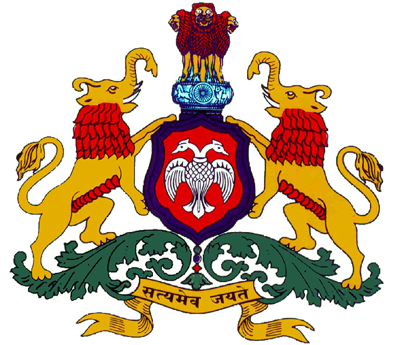BESCOM – Bangalore Electricity Supply Company Limited is responsible for Power distribution in Eight districts of Karnataka (Bangalore Urban, Bangalore Rural, Chikkaballapura, Kolar, Davanagere, Tumkur, Chitradurga and Ramanagara). BESCOM covers an area of 41,092 Sq. Kms. with a population of over 207 lakhs.
The company has 4 operating Zones – Bangalore Metropolitan Area Zone(North), Bangalore Metropolitan Area Zone(South), Bangalore Rural Area Zone and Chitradurga Zone, 9 Circles, 32 Divisions, 147 Sub-divisions and 534 Section Offices.
In the year 1999, Karnataka embarked on a major Reform of the power sector. As a first step, Karnataka Electricity Board (KEB) was dissolved and in its place, the Karnataka Power Transmission Corporation Limited (KPTCL) was incorporated.
This was followed by the constitution of Karnataka Electricity Regulatory Commission (KERC) in November 1999.In the next phase of the Reform Process, the transmission and distribution business managed by KPTCL were unbundled in June 2002. Four new distribution companies were formed to distribute power in Karnataka.
Bangalore Electricity Supply Company Limited (BESCOM) has taken over the responsibility from KPTCL for the distribution of electricity in 8 districts and commenced its operations from 1st June 2002.
BESCOM HISTORY
The erstwhile Mysore State had the enviable and glorious position of establishing the first major hydroelectric generating station for commercial operations at Shivasamudram as early as 1902. The art at that time was still in its infancy, even in the advanced countries. The longest transmission line, at the highest voltage in the world, was constructed to meet the power needs of mining operations at Kolar Gold Fields.
The generating capacity of the Shivasamudram Power House gradually increased to 42 MW in stages. To meet the increasing demand for power, the Shimsha Generating Station, with an installed capacity of 17.2 MW, was commissioned in the year 1940. The power demand was ever on the increase, for industries and rural electrification, and additions to generating capacity became imperative. The 1st Stage of 48 MW and 2nd stage of 72 MW of the Mahatma Gandhi Hydroelectric Station were commissioned during 1948 and 1965, respectively.
The State of Karnataka, with availability of cheap electric power, and other infrastructure facilities, was conducive for increased tempo of industrial activity. It became necessary to augment the power-generating capacity by harnessing the entire potential of the Sharavathi Valley. The first unit of 89.1 MW was commissioned in 1964 and completed in 1977.
The demand for power saw a phenomenal increase in the mid sixties and onwards with the setting up of many public sector and private industries in the State. As power generation in the state was entirely dependent on monsoon and was subject to its vagaries, the state government set up a coal based power plant at Raichur. The present installed capacity of the power plant at Raichur is 1260 MW. To augment the energy resources of the State, the Kalinadi Project with an installed capacity of 810 MW at Nagahari Power House and 100MW at Supa Dam Power House, with an energy potential of 4,112 Mkwh, were set up.
The transmission and distribution system in the state was under the control of the Government of Karnataka (then Mysore) till year 1957. In the year 1957, MSEB was formed and the private distribution companies were amalgamated with Karnataka Electricity Board.
Till the year 1986, KEB was a profit-making organisation. However, in the subsequent years, like other State Electricity Boards in the country, KEB also started incurring losses, mainly due to the increase in agricultural consumption and due to the implementation of the socio-economic policies of the government.
To improve the performance of the power sector and in tune with the Reforms initiated by Government of India, the Government of Karnataka came out with a general policy proposing fundamental and radical Reforms in the power sector. Accordingly an Act, namely the Karnataka Electricity Reforms Act was passed by the Karnataka Legislature. The Reform has mandated major restructuring of the Karnataka Electricity Board and its Corporation. As part of corporatisation, Karnataka Electricity Board ceased to exit and Karnataka Power Transmission Corporation Limited was constituted from 1st August 1999.
As a part of the Reforms, the distribution sector was further divided into 4 companies viz. Bangalore Electricity Supply Company Limited – BESCOM; Hubli Electricity Supply Company Limited – HESCOM; Mangalore Electricity Supply Company Limited – MESCOM; Gulbarga Electricity Supply Company Limited – GESCOM. These companies came into existence from 1st June 2002.
 Official Website of GoK
Official Website of GoK















